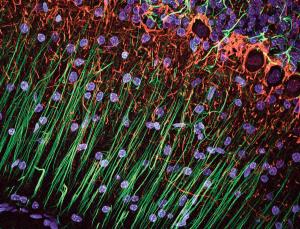Growing artificial body parts in the lab starts with a scaffold. This acts as a template on which to grow cells from the patient’s body. This has been successfully used to grow lymph nodes, heart cells and voice boxes from a person’s stem cells. Bioengineers have even grown and transplanted anartificial kidney in a rat.
Growing nerve tissue in the lab is much more difficult, though. In the brain, new neural cells grow in a complex and specialised matrix of proteins. This matrix is so important that damaged nerve cells don’t regenerate without it. But its complexity is difficult to reproduce. To try to get round this problem,Paolo Macchiarini and Silvia Baiguera at the Karolinska Institute in Stockholm, Sweden, and colleagues combined a scaffold made from gelatin with a tiny amount of rat brain tissue that had already had its cells removed. This “decellularised” tissue, they hoped, would provide enough of the crucial biochemical cues to enable seeded cells to develop as they would in the brain.
When the team added mesenchymal stem cells – taken from another rat’s bone marrow – to the mix, they found evidence that the stem cells had started to develop into neural cells (Biomaterials, doi.org/qfh).
Full article: http://www.newscientist.com/article/mg22029473.800-grow-a-new-brain-first-steps-to-labmade-grey-matter.html#.UwJJeEJ_vRo
